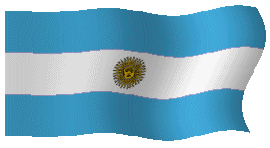
B"H
Jewish  Tours
Tours
 Buenos Aires, Argentina
Buenos Aires, Argentina
ARGENTINA, South American Federal Republic, general population (2004) 39,150,000; Jewish population 190,000.
The Russian Revolution increased the government's fear of
similar revolutionary activity in Argentina. Since the Jews were generally
identified as "rusos" (Russians), anti-revolutionary fervor developed
into overt antisemitism. During the "Red-scare pogrom" known in
Argentina as La Semana Trágica, January 7–13, 1919, a pogrom
The intense antagonism toward Jews, and particularly to "Russians," created administrative difficulties in Jewish immigration procedures in the 1920s. "Soprotimis," the organization dealing with immigrants, concluded special agreements with the Immigration Department in November 1921 and August 1924. In 1926, however, Jews were compelled to attempt illegal immigration, and, in at least one case, several of them drowned while crossing the Uruguay River. Concurrently, a strong feeling of nationalism, based on xenophobia and influenced by Mussolini's example in Italy, began to develop in Argentina.
Nevertheless, the 1920s saw a large increase in the Jewish population of Argentina. Around 79,000 immigrants arrived; the economic situation of veteran settlers continued to improve; 15 credit cooperatives were founded; charitable organizations expanded (the Jewish hospital opened its first building in 1921 and its second in 1928); and the Yiddish press, literature, and theater flourished. Simultaneously, the number of Argentinean-born Jews favoring comprehensive cultural integration increased, and they founded the organization Hebraica (see *Sociedad Hebraica Argentina). Political and institutional differences between various organizations, Zionist parties, and between the Zionists and left-wing groups became more pronounced during this decade and prevented attempts to form a central communal institution, the Alianza.
These differences, however, did not interfere with the general and determined fight against white-slave traders, the so-called "Tmeim" (unclean). A country that attracted predominantly male immigrants, Argentina had an unequal balance between the sexes and consequently drew representatives of the Jewish underworld of Eastern Europe beginning in the mid-1880s. The white-slave trade was a blot on the law-abiding Jewish public, and, despite the wealth of the traders, all Argentinean Jewish organizations imposed a comprehensive social ban on them, which was even specified in the statutes of most groups, from the 1890s onward. The matter became a violent public struggle during various periods, as in 1909 and 1913, and particularly in the 1920s. To compensate for their ostracism, the traders organized themselves into an official mutual aid organization known as Ẓvi Migdal, which was responsible for protecting them by bribing the authorities and for supplying religious services such as a separate synagogue and cemetery. From the 1890s onward, the London-based Jewish Association for the Protection of Girls and Women maintained a branch in Buenos Aires known as Ezras Noshim. It systematically dogged the footsteps of the "Tmeim" and provided as much assistance as possible to the victims, given an over-lenient law and the widespread bribing of government officials. The white-slave traders' association in Buenos Aires was not dissolved until 1930, when most of its members were either arrested or fled. The fight against and boycott of the remaining white-slave traders was continued and characterized the Jewish community as the only group in Argentina that eradicated slave trade in its own ranks.
|
Visite nuestro sitio/Visit our home page: |